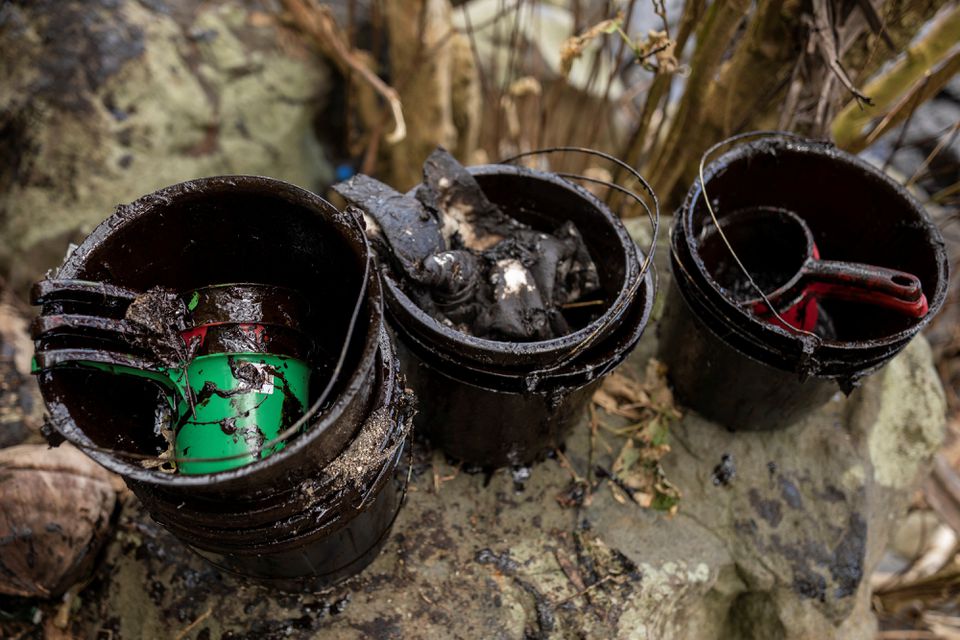POLA, Philippines -- Residents of a central Philippine province affected by an oil spill from a sunken tanker endured the powerful stench of petroleum as they cleaned it up using buckets and mugs while authorities raced to contain environmental damage.
Wearing personal protective equipment and masks, residents of the town of Pola in Oriental Mindoro, with the help of Philippine coast guard crew, collected debris soaked in oil and wiped thick sludge from rocks along the shore.
"Here in our area the oil is really thick and the smell is strong," said 34-year-old resident Maribel Famadico while cleaning along the shore with other volunteers.
|
|
| A volunteer dressed in personal protective equipment gathers the oil spill collected from the sunken fuel tanker MT Princess Empress, on the shore of Pola, in Oriental Mindoro province, Philippines, March 7, 2023. Photo: Reuters |
"There is so much oil that we become nauseous when we are not wearing protection. Many are feeling unwell because of the stench," she added.
Philippine authorities said on Monday they believed they have found the tanker that sank off Oriental Mindoro last week and that they planned to deploy a remotely-operated autonomous vehicle to pinpoint its exact location.
The tanker, the MT Princess Empress, is thought to be lying at about 1,200 feet (366 metres) below sea level, off Oriental Mindoro province, though the information still needed to be verified, according to the environment ministry.
|
|
| Buckets used to clean up the oil spill from the sunken fuel tanker MT Princess Empress are placed on the shore of Pola, Oriental Mindoro province, Philippines, March 7, 2023. Photo: Reuters |
The vessel was carrying about 800,000 litres (211,338 gallons) of industrial fuel oil when it suffered engine trouble on Feb. 28 in rough seas.
Famadico said ridding the shore and rocks of oil will likely take days.
"(The oil) comes back with the tide. Yesterday we cleaned this area but there is more again today," she said.
Marine scientists at the University of the Philippines said about 36,000 hectares (88,958 acres) of coral reef, mangroves and sea-grass were potentially in danger of being affected by the oil slick.























































